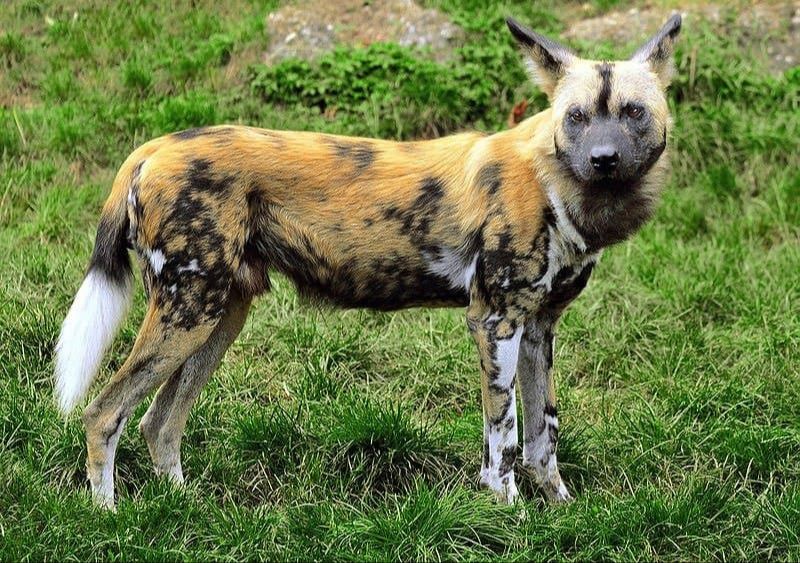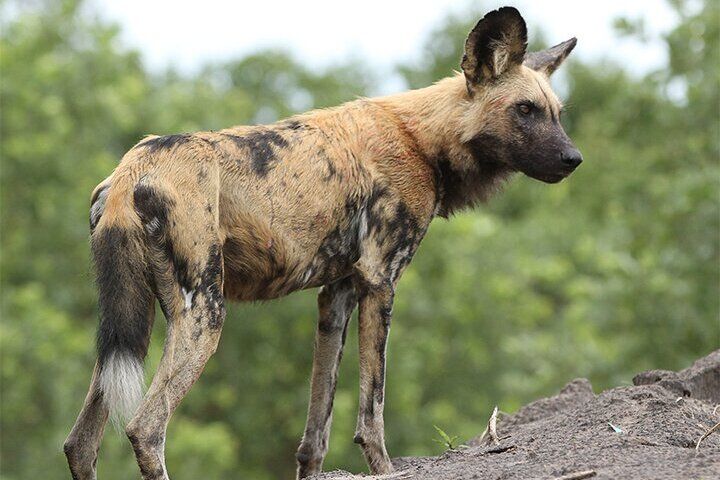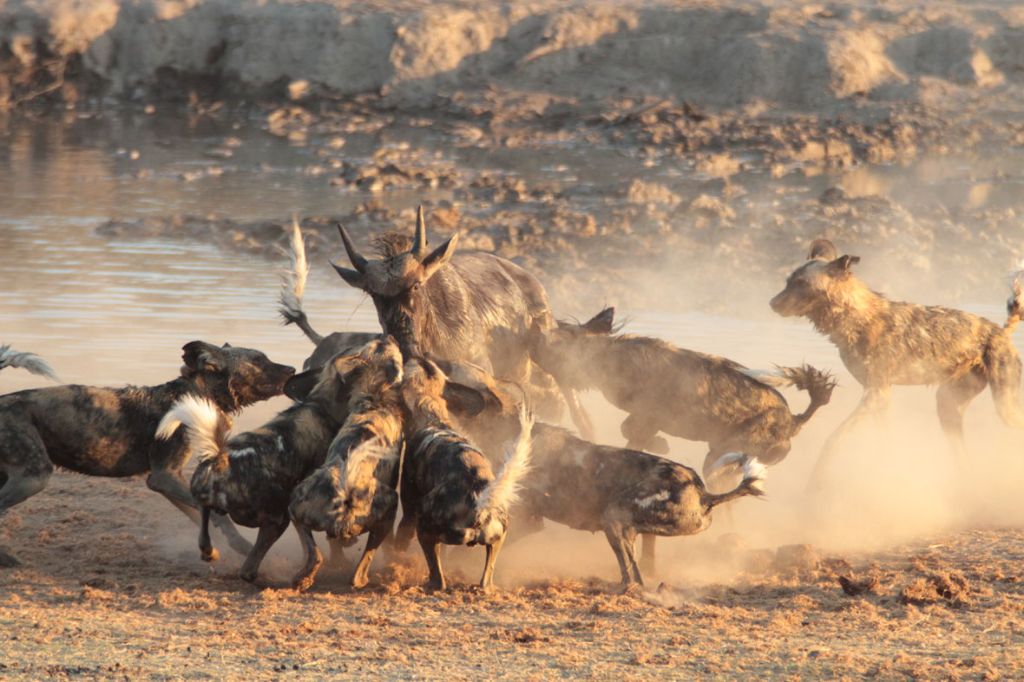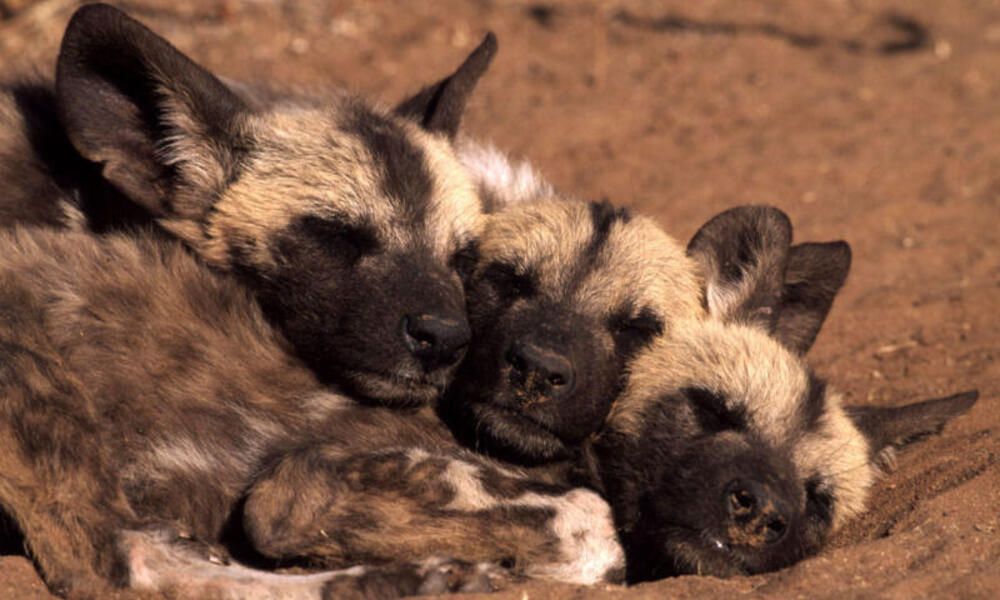Introduction
An adaptation is a physical or behavioral trait that helps an animal survive in its environment. Adaptations evolve over generations and allow animals to thrive in their habitats. There are many different types of wild dogs that live in a variety of environments around the world.
Wild dogs belong to the canid family, which includes wolves, foxes, coyotes, and domestic dogs. Some well-known species of wild dogs include African wild dogs, dholes, and dingoes. Wild dogs are found on every continent except Antarctica and inhabit areas like grasslands, forests, deserts, tundra, and wetlands.
To survive in their natural habitats, wild dogs have developed specialized physical adaptations and social behaviors over time. Their adaptations allow them to effectively hunt, communicate, raise young, and avoid predators. This article will provide an overview of some of the key adaptations that enable different wild dog species to thrive.
Physical Adaptations
African wild dogs have lean bodies and long, muscular legs that allow them to run for long distances when hunting prey across the savanna https://denverzoo.org/animals/african-wild-dog/. Their bodies are built for endurance and allow them to tire out prey before going in for the kill. They have large lungs and hearts to oxygenate their streamlined bodies https://www.sciencedaily.com/releases/2020/09/200907080346.htm.
African wild dogs have fur in shades of brown, black, and beige with white patches. Their fur helps camouflage them when hunting prey across open grasslands. They have powerful jaws to grab and hold prey. Their teeth allow them to effectively kill large prey like antelope and wildebeests.

Social Behavior
Wild dogs live in complex social groups called packs. A pack typically consists of 6-20 members and has a dominant breeding pair, their offspring, and other non-breeding adults (Tighe, 2013). Packs exhibit a division of labor where certain dogs specialize in hunting while others protect and provision the young. Though wild dogs are very social with their own pack, they are generally quite wary of dogs outside their pack.
Wild dogs are highly cooperative hunters that coordinate to pursue, attack, and kill their prey. A pack’s hunting strategy involves members taking on different roles like locating prey, chasing prey, and preventing prey escape. Studies show that larger packs tend to have greater hunting success. The level of cooperation and coordination shown in wild dog hunting is rare among other predators (Hluhluwe Game Reserve, n.d.).
Wild dog packs are structured around complex social hierarchies and relationships. Greeting behaviors like licking and nibbling help establish bonds and reduce tension between pack members. Body postures and vocalizations are used to maintain order, show submission, and avoid conflicts. Their advanced social skills allow packs to be extremely cooperative when rearing young, defending territory, and acquiring food (Chen et al., 2019).
Communication
African wild dogs have complex methods of communication, both vocally and through scent marking. They utilize a repertoire of vocalizations including twittering, whines, squeals, and irregular vibrato sounds to coordinate activities within their pack (https://docplayer.net/166352516-Malawi-mvuu-annual-camp.html). Scent marking with urine, feces, and anal gland secretions is also an important mode of communication. Researchers are striving to understand how wild dogs communicate through scent marking. Understanding the role and content of scent marking is vital to conservation efforts, as it provides insight into territoriality and social structure (https://archive.org/stream/animalkeepersfo302003amer/animalkeepersfo302003amer_djvu.txt).
Hunting
African wild dogs have several remarkable adaptations that aid their hunting success. They have incredible stamina and can run for long distances at up to 66 km/h while chasing prey across open plains (1). Their legs are unusually long for their body size, allowing them to take long strides when pursuing prey. Wild dogs are also highly coordinated hunters that work together as a pack to surround and isolate their targets (2). Different dogs may take on specialized roles during the hunt, with certain individuals initiating the chase while others wait to ambush fleeing prey. Their teamwork and endurance allow them to successfully hunt fleet-footed animals like impala and kudu.

Pack hunting requires complex communication among members. African wild dogs have an extensive repertoire of calls, postures and gestures to coordinate their movements during a hunt (1). Vocalizations like twittering, squeaking and explosive roars help them remain in contact over long distances. Lead hunters frequently look back at followers to ensure the pack stays together. This remarkable cooperative strategy allows African wild dogs to take down prey much larger than themselves.
Reproduction
African wild dogs are seasonal breeders, with mating taking place between March and June during the annual denning season (Van der Weyde, 2013). Females typically give birth to litters of 2 to 20 pups after a gestation period of 70 to 73 days, with an average litter size of 10 (Berghe, 2012).
Females are responsible for giving birth and caring for the pups in dens during the first few weeks. Males remain with the pack but do not participate directly in raising the pups. After about 3 weeks, females will begin to leave the den for short periods to hunt, returning to nurse the pups. At around 5-6 weeks old, the pups begin to venture out of the den and eat regurgitated solid food, eventually joining the adults on hunts by about 10 weeks of age (Vander Weyde, 2013).
Both males and females will help feed and protect the pups as they mature. Pups will remain with the natal pack for 12-18 months before dispersing to find their own mates and form new packs (Berghe, 2012).
Habitat
African wild dogs live primarily in grasslands, savannas, and deserts across sub-Saharan Africa. Their historical range stretched from desert areas in North Africa down through East Africa and west to southern Africa (1). However, habitat loss has greatly reduced their range. Today they are found mainly in protected areas with adequate prey, and their range covers about 10% of their historical distribution (2).
Grasslands and savannas provide an open landscape needed for hunting prey at high speeds. African wild dogs will den in any area that provides shelter, such as hollow termite mounds or aardvark holes. Dens are usually located near waterholes or rivers, where prey are abundant (1). While they avoid forested areas, African wild dogs have been spotted in deserts such as the Namib and the Sahara. There is at least one record of a pack being sighted on the summit of Mount Kilimanjaro, around 4,600 m above sea level (2).
Sources:
(1) https://animalia.bio/african-wild-dog?environment=328
(2) https://animalia.bio/cape-wild-dog
Diet
Wild dogs are carnivores that primarily hunt and feed on prey animals like antelopes, warthogs, rodents, and birds (Source 1). They have an incredibly successful hunting rate, with around 60-70% of hunts resulting in a kill (Source 2). While wild dogs have a preference for live prey, they are opportunistic predators and will also scavenge for food as needed. Scavenging makes up a relatively small portion of their diet.
Cooperative hunting allows wild dogs to take down prey much larger than themselves, including wildebeests and antelopes. They use teamwork and endurance running to exhaust prey before attacking from multiple directions. Prey animals in savannas and grasslands make up the bulk of their diet.

Wild dogs have incredibly strong jaws and teeth compared to their body size, allowing them to rapidly consume much of their prey. They can devour up to 10 pounds of meat per day. The entire pack will share in a fresh kill, regurgitating food for pups and injured dogs that remained at the den.
Population Status
African wild dogs are classified as endangered by the IUCN Red List, with only about 6,600 adults remaining in the wild in Africa ([1]). Their numbers have declined due to habitat loss, human persecution, disease outbreaks like rabies, and competition with larger predators like lions. Wild dog populations have disappeared from much of their historical range.
Some major threats to African wild dogs include ([2]):
- Habitat fragmentation – breaking up of their home ranges
- Snaring and poisoning by livestock farmers
- Road casualties
- Disease transmission from domestic dogs
Various conservation efforts are underway to protect remaining wild dog populations. These include establishing protected areas and translocating packs to suitable habitats.

Conclusion
Wild dogs have evolved a number of key adaptations that allow them to survive and thrive in their environment. Their lean bodies, keen senses, and social pack behavior make them effective hunters able to take down prey much larger than themselves. Their complex vocalizations and social structure facilitate cooperation during the hunt and rearing of pups. Though wild dog populations face threats, their adaptations continue to serve them well as they fill an important niche in the ecosystems they inhabit.
In summary, some of the notable adaptations of wild dogs include:
- Lean, athletic bodies built for stamina and speed
- Enhanced senses of smell, sight, and hearing to track prey across long distances
- Powerful jaws and teeth capable of consuming and digesting bones
- Complex social structure and vocal communication to coordinate the pack
- Ability to regulate body temperature even under hot conditions during the hunt
- Denning and feeding behaviors that promote rearing of pups
These adaptations and more have allowed wild dogs to thrive as efficient hunters and social carnivores. Though vulnerable to habitat loss, they remain a keystone species able to survive in diverse ecosystems when conserved.
